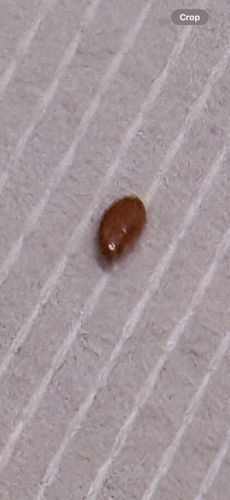Bed Bug
Scientific Name: Cimex lectularius
Order & Family: Hemiptera (true bugs) / Cimicidae
Size: Adult bed bugs are typically 4-5 mm (0.16-0.20 inches) long, similar in size to an apple seed. Nymphs (juveniles) are smaller and can be as tiny as 1 mm.

Natural Habitat
Primarily indoor environments, especially bedrooms. They infest mattresses, box springs, bed frames, headboards, furniture, cracks in walls, and behind wallpaper. They are commonly found in homes, apartments, hotels, dormitories, and other shared living spaces.
Diet & Feeding
Strictly hematophagous, feeding on the blood of humans and other warm-blooded animals. While they prefer human blood, they can feed on pets like cats and dogs if humans are not available.
Behavior Patterns
They are nocturnal and typically hide during the day in cracks and crevices, mattress seams, bed frames, headboards, and other objects near the bed. They feed by piercing the skin of humans (or animals) and drawing blood. Bites often occur in lines or clusters.
Risks & Benefits
Potential risks include itchy bites, skin rashes, allergic reactions, and secondary skin infections from scratching. In rare cases, severe infestations can lead to anemia. There are no known benefits to humans or the ecosystem; they are considered pests.
Identified on: 8/17/2025